Alvaro Vargas Llosa • Monday, April 16, 2018 •

Sometimes fiction offers better lessons in political economy than reality. “Money Heist,” the Spanish TV series that is having a big global impact thanks to Netflix, gives us a very important one (no, I won’t spoil it).
The Premise: “The Professor” directs a gang of robbers who assault the Royal Mint of Spain in order to print 2.4 billion euros and hopefully take off with the money. His argument: we are not stealing from anyone because we are printing new notes, just as the central bank does today by creating euros out of thin air. The European Central Bank (just like the U.S. Federal Reserve) channels the newly created money to the banks. The only difference is that the robbers, all of whom have mountains of problems, want it for themselves.
All the monetary analysts of the world would not be able to instill in people such a powerful idea about what central banks have done since the beginning of the financial crisis. Although the Professor uses a cynical argument to justify the gang’s actions, there is a tacit lesson here: governments have indirectly been robbing people for years by creating money artificially under the cover of political sophisms that make it hard for folks to understand that they are the victims.
Robert Higgs • Thursday, April 12, 2018 •
 If you are an American, have you asked yourself these questions?
If you are an American, have you asked yourself these questions?
- What purpose of mine is served by the U.S. government’s making war in Iraq?
- What purpose of mine is served by the U.S. government’s making war in Afghanistan?
- What purpose of mine is served by the U.S. government’s making war in Syria?
- What purpose of mine is served by the U.S. government’s making war in Yemen?
- What purpose of mine is served by the U.S. government’s making war in Africa?
- What purpose of mine would be served by the U.S. government’s making war in Iran?
Unless you are an unusual American, and if you are honest, your answer in each case would be, No purpose of mine is served by such war making.
Robert Higgs • Tuesday, April 10, 2018 •
 We hear a lot of lamentations about the loss of American jobs in manufacturing (notwithstanding that U.S. manufacturing output has never been greater). People purport to want to bring back jobs in factories. I’m not sure a lot of thought goes into these views.
We hear a lot of lamentations about the loss of American jobs in manufacturing (notwithstanding that U.S. manufacturing output has never been greater). People purport to want to bring back jobs in factories. I’m not sure a lot of thought goes into these views.
I have some personal experience in factory employment, although it was long ago—in the golden age of such employment, some might say. For five summers while I was going to high school and college during the academic years of the late 1950s and early 1960s, I worked in a factory—four summers in a box factory and one summer in an ice plant. The work was physically hard and highly repetitive under unpleasant physical conditions of high heat (at the box factory) or extreme cold (at the ice plant).
I was glad to have these jobs, however, because the wage rates were the highest of any to be had in my godforsaken little town. But at the time I was 15-20 years old and as strong as a young bull. I longed for the overtime hours, which paid a 50 percent wage premium. My record for weekly hours worked was 92 at the ice plant one midsummer week during a frenzy in the cantaloupe packing season. (In those days the melons were packed in wooden crates—remember the box factory—and loaded into railroad boxcars that were then sprayed with crushed ice to keep the contents cold during their transport to markets all around the USA.) I wanted to earn as much as possible to help me get through the school years without continuing to work full-time. For a stretch of three months I could take the punishment.
But would I have wanted to continue doing this work indefinitely? Not on your life. Indeed, it was no coincidence that nearly all the workers in these factories were young men like me, few of them more than 30 years old. It’s definitely not an old man’s game; it’s not even a middle-aged man’s game. Those who long to bring back factory employment, I strongly suspect, have not given much thought to the nature of such work. It wears men and women down, making them old before their time. One of the great benefits of economic development is that such employment becomes a steadily less prominent part of total employment.
(For a priceless account, funny yet sad at the same time, of work in the Michigan auto plants, read Ben Hamper’s Rivethead.)
***
Robert Higgs is Senior Fellow in Political Economy at the Independent Institute and Editor at Large of The Independent Review. His latest book is Taking A Stand: Reflections on Life, Liberty, and the Economy.
Sam Staley • Monday, April 9, 2018 •
 Ready Player One seems destined to become another Steven Spielberg classic, serving up a movie that appeals to a wide range of audiences with a solid story, well-crafted characters and engaging adventure from beginning to end. Along the way, viewers also get a good dose of ethics, with an emphasis on empowering the individual over a centralized authority.
Ready Player One seems destined to become another Steven Spielberg classic, serving up a movie that appeals to a wide range of audiences with a solid story, well-crafted characters and engaging adventure from beginning to end. Along the way, viewers also get a good dose of ethics, with an emphasis on empowering the individual over a centralized authority.
Based on co-screenwriter Ernest Cline’s original novel of the same name, Ready Player One takes place in Columbus, Ohio in a dystopian near future (2045). (Columbus seems to be getting a lot of play in dystopia these days; see Tracy Lawson’s very libertarian sci-fi Counteract action series of young adult novels.) The world is ravaged by overpopulation. Unemployment and underemployment are widespread. Mobile homes are built on top of each other, creating vertical slums called “stacks.” The imagery is striking, creating desolate landscape that anyone would want to escape. Audiences are immediately drawn into a video gaming aesthetic that complements the plot.
In order to escape their bleak existence, most citizens living in the stacks spend their days and evenings in a virtual reality world called OASIS (Ontologically Anthropocentric Sensory Immersive Simulation) where they can play out their personal fantasies.
Robert Higgs • Monday, April 9, 2018 •
 Senator Hiram Johnson is credited with having said during World War I, “The first casualty, when war comes, is truth,” and this observation has been made in more or less the same words many times, both before and since Johnson made his statement. No doubt the declaration is true, but it is true in a much broader context as well. States engage not only in conquest, plunder, and oppression, but also—in order to create conditions in which the populace is rendered less likely to resist a state’s abuses or rebel against it—in pervasive bamboozlement. Those who support the state ideologically tend to engage in chronic misrepresentation of what the state does and how it does it. So, not only war—the characteristic state action—but statism in general makes truth the first casualty of its claims, proposals, programs, and projects.
Senator Hiram Johnson is credited with having said during World War I, “The first casualty, when war comes, is truth,” and this observation has been made in more or less the same words many times, both before and since Johnson made his statement. No doubt the declaration is true, but it is true in a much broader context as well. States engage not only in conquest, plunder, and oppression, but also—in order to create conditions in which the populace is rendered less likely to resist a state’s abuses or rebel against it—in pervasive bamboozlement. Those who support the state ideologically tend to engage in chronic misrepresentation of what the state does and how it does it. So, not only war—the characteristic state action—but statism in general makes truth the first casualty of its claims, proposals, programs, and projects.
Consider some common examples. Foreign sellers don’t “dump” goods in U.S. markets; they sell them at prices American buyers find attractive. Immigrants and refugees don’t “invade” the USA; they cross the border and, unless obstructed by state agents, proceed into the country peacefully. After a hurricane or other natural emergency, local sellers don’t “price gouge”; they sell, as usual, at prices that reflect the currently prevailing conditions of demand and supply. Government make-work programs don’t “create jobs”; they hire people for politically determined activities while, owing to the programs’ financing by taxation, reducing the number of people hired for activities valued directly or indirectly by consumers. The Transportation Security Agency does not provide “security” for airline passengers; it provides security theater while greatly diminishing the passengers’ convenience and ease of travel—and probably their true security as well.
In sum, behind virtually every government claim, proposal, program, or project, we find a misuse of language. Government goes hand in hand with calling actions what they are not, often the opposite of what they really are. We would do well to bear in mind Nietzsche’s sweeping declaration: “Whatever the State saith is a lie.” Often it is not a plain and simple lie, but one that springs from twisting language into a grotesque misrepresentation of reality.
***
Robert Higgs is Senior Fellow in Political Economy at the Independent Institute and Editor at Large of The Independent Review. His latest book is Taking A Stand: Reflections on Life, Liberty, and the Economy.
Raymond March • Thursday, April 5, 2018 •
 This past October, the Food and Drug Administration issued a warning letter to Opternative, a company specializing in providing online eye-exams. The FDA has now made its letter public and set up a meeting with Opternative in July to make sure the company is in regulatory compliance.
This past October, the Food and Drug Administration issued a warning letter to Opternative, a company specializing in providing online eye-exams. The FDA has now made its letter public and set up a meeting with Opternative in July to make sure the company is in regulatory compliance.
The crux of the letter is that the FDA considers theses eye exams to be a Class 2 device, which requires premarket approval. Because the agency considers any device “intended for use in the diagnosis of disease or other conditions or in the cure, mitigation, treatment, or prevention of disease, or to affect the structure or any function of the body” to be approved as a Class 2 device, it considers Opernative to be shirting around the required approval process.
Opternative, whose product is currently approved as a Class 1 device, argued that because it provides only refracted eye exams, which lack the comprehensiveness of an eye exam performed by an optometrist, additional regulatory approval was unnecessary.
The FDA’s action is likely in response to an open letter filed by the American Optometrist Association last April. Unsurprisingly, the trade group is in strong support of the regulator’s crackdown. AOA President Christopher Quinn recently wrote in a statement, “The FDA’s enforcement action against Opternative is major victory for public health and for the tens of millions of Americans who need and deserve access to quality care to safeguard their health and vision.” He continues, “It is our hope that we are a step closer to holding all companies that would place profits ahead of patient care fully accountable for their actions.”
Raymond March • Tuesday, April 3, 2018 •
 In an unprecedented effort, the Food and Drug Administration is working to significantly reduce nicotine levels in cigarettes. In one policy scenario, the FDA would set a limit of 0.4 milligrams of nicotine per gram of tobacco, reducing the typical nicotine level by 97 percent.
In an unprecedented effort, the Food and Drug Administration is working to significantly reduce nicotine levels in cigarettes. In one policy scenario, the FDA would set a limit of 0.4 milligrams of nicotine per gram of tobacco, reducing the typical nicotine level by 97 percent.
Their goal is clear: get current smokers to quit and deter future generations from getting hooked. Smoking is deadly, causing over 480,000 preventable deaths per year. It is also financially taxing, resulting in nearly $170 billion in direct medical cost costs annually.
While the amount of death and steep medical costs are concerning, good intentions do not always result in good outcomes. Several questions come to mind when assessing the FDA’s recent efforts. Among them are: How would changing nicotine levels change the incentives of smokers? Perhaps more importantly, how successful has the FDA been in the past in promoting public health?
Efforts to regulate vices frequently produce unintended, and harmful, consequences. For example, regulations placed on physicians and consumers to prevent opioid abuse often drive patients to seek dangerous illicit alternatives to manage their pain or cope with their addiction. Heroin is a common choice. For the FDA to prevent harmful consequences of their actions, reducing nicotine in cigarettes would be a start at best. What about all the other tobacco products smokers may turn to?
Adam Summers • Wednesday, March 28, 2018 •
 In the wake of last month’s school shooting at Marjory Stoneman Douglas High School in Parkland, Fla., which resulted in 17 students and teachers being killed and another 17 injured, gun-control activists, frustrated with their relative failure to enact sweeping bans and restrictions on firearms ownership, resorted to scapegoating the National Rifle Association and its supporters, and launching a social media campaign to pressure companies that offer certain services, discounts, or other perks to NRA members to sever their relationships with the organization.
In the wake of last month’s school shooting at Marjory Stoneman Douglas High School in Parkland, Fla., which resulted in 17 students and teachers being killed and another 17 injured, gun-control activists, frustrated with their relative failure to enact sweeping bans and restrictions on firearms ownership, resorted to scapegoating the National Rifle Association and its supporters, and launching a social media campaign to pressure companies that offer certain services, discounts, or other perks to NRA members to sever their relationships with the organization.
Many have even absurdly claimed that the organization, devoted to preserving individuals’ inherent and constitutionally protected right to self-defense, was a “terrorist organization,” and that it had “blood on its hands,” because one disturbed young man used a gun to cause a horrendous tragedy (notwithstanding numerous opportunities and failures of federal and local government authorities to intervene, and possibly prevent such an attack). Moreover, despite the media hysteria and predictable drumbeat for more gun control surrounding each and every school shooting, the number of kids getting shot and killed in schools has actually declined significantly since the 1990s, as have crimes rates (including gun crimes) generally.
Robert Higgs • Tuesday, March 27, 2018 •
 Socialism’s greatest appeal springs from its promise of economic equality. Many people, upon their first encounter with the ideology, find this promise the very heart and soul of justice. Yet, completely apart from whether such an outcome could or would ever be attained in practice, a great and insuperable problem remains: in a world where individuals always differ enormously in personal attributes and circumstances, in personal conduct and social constraints, it is difficult to think of anything more unfair than forcibly ensuring that in spite of all these differences, everyone ends up with the same income or wealth. The whole idea is an ill-considered, falsely attractive attribute of pie-in-the-sky socialism even if it were possible to bring it about.
Socialism’s greatest appeal springs from its promise of economic equality. Many people, upon their first encounter with the ideology, find this promise the very heart and soul of justice. Yet, completely apart from whether such an outcome could or would ever be attained in practice, a great and insuperable problem remains: in a world where individuals always differ enormously in personal attributes and circumstances, in personal conduct and social constraints, it is difficult to think of anything more unfair than forcibly ensuring that in spite of all these differences, everyone ends up with the same income or wealth. The whole idea is an ill-considered, falsely attractive attribute of pie-in-the-sky socialism even if it were possible to bring it about.
***
Robert Higgs is Senior Fellow in Political Economy at the Independent Institute and Editor at Large of The Independent Review. His latest book is Taking A Stand: Reflections on Life, Liberty, and the Economy.
Robert Higgs • Tuesday, March 27, 2018 •
 The root of a great and destructive economic misunderstanding can be traced to an accounting statement known as the balance of international payments. As the name suggests, this accounting statement rests on the idea that nations (in the form of individuals, firms and other organizations, and governments) trade with other nations (similarly composed). But the aggregation of the individuals, firms and other organizations, and governments in accordance with the country in which they are located sets in motion a basic misunderstanding.
The root of a great and destructive economic misunderstanding can be traced to an accounting statement known as the balance of international payments. As the name suggests, this accounting statement rests on the idea that nations (in the form of individuals, firms and other organizations, and governments) trade with other nations (similarly composed). But the aggregation of the individuals, firms and other organizations, and governments in accordance with the country in which they are located sets in motion a basic misunderstanding.
In reality, individuals, firms and other organizations, and governments trade with other such entities, some of which are located in the same country and others of which are located in other countries. The location of the trading partners has no economic significance whatsoever. Trading entities enter into exchanges voluntarily, each one in each transaction anticipating a gain from the trade. Hence, in expectational terms, every such trade entails a gain from trade, or in other words an addition to the trader’s wealth.
















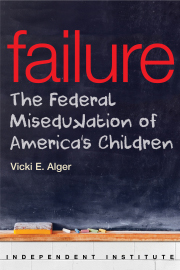

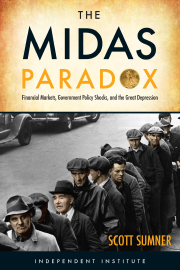
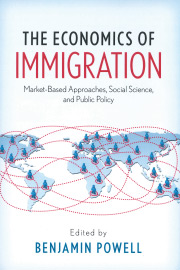

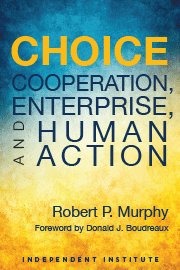
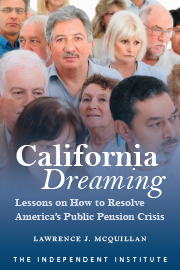


 If you are an American, have you asked yourself these questions?
If you are an American, have you asked yourself these questions? We hear a lot of lamentations about the loss of American jobs in manufacturing (notwithstanding that U.S. manufacturing output has never been greater). People purport to want to bring back jobs in factories. I’m not sure a lot of thought goes into these views.
We hear a lot of lamentations about the loss of American jobs in manufacturing (notwithstanding that U.S. manufacturing output has never been greater). People purport to want to bring back jobs in factories. I’m not sure a lot of thought goes into these views.
 Senator Hiram Johnson is credited with having said during World War I,
Senator Hiram Johnson is credited with having said during World War I,  This past October, the Food and Drug Administration
This past October, the Food and Drug Administration  In an unprecedented effort, the Food and Drug Administration is working to significantly
In an unprecedented effort, the Food and Drug Administration is working to significantly  In the wake of last month’s school shooting at
In the wake of last month’s school shooting at  Socialism’s greatest appeal springs from its promise of economic equality. Many people, upon their first encounter with the ideology, find this promise the very heart and soul of justice. Yet, completely apart from whether such an outcome could or would ever be attained in practice, a great and insuperable problem remains: in a world where individuals always differ enormously in personal attributes and circumstances, in personal conduct and social constraints, it is difficult to think of anything more unfair than forcibly ensuring that in spite of all these differences, everyone ends up with the same income or wealth. The whole idea is an ill-considered, falsely attractive attribute of pie-in-the-sky socialism even if it were possible to bring it about.
Socialism’s greatest appeal springs from its promise of economic equality. Many people, upon their first encounter with the ideology, find this promise the very heart and soul of justice. Yet, completely apart from whether such an outcome could or would ever be attained in practice, a great and insuperable problem remains: in a world where individuals always differ enormously in personal attributes and circumstances, in personal conduct and social constraints, it is difficult to think of anything more unfair than forcibly ensuring that in spite of all these differences, everyone ends up with the same income or wealth. The whole idea is an ill-considered, falsely attractive attribute of pie-in-the-sky socialism even if it were possible to bring it about. The root of a great and destructive economic misunderstanding can be traced to an accounting statement known as the
The root of a great and destructive economic misunderstanding can be traced to an accounting statement known as the